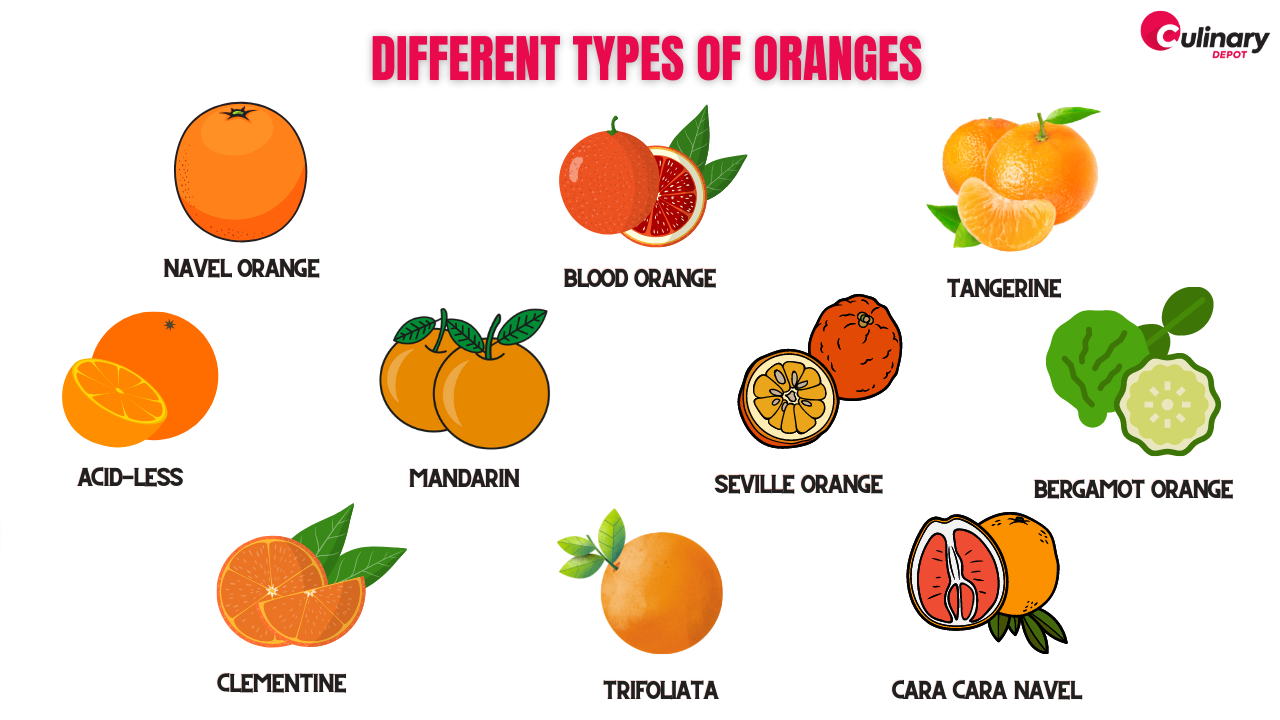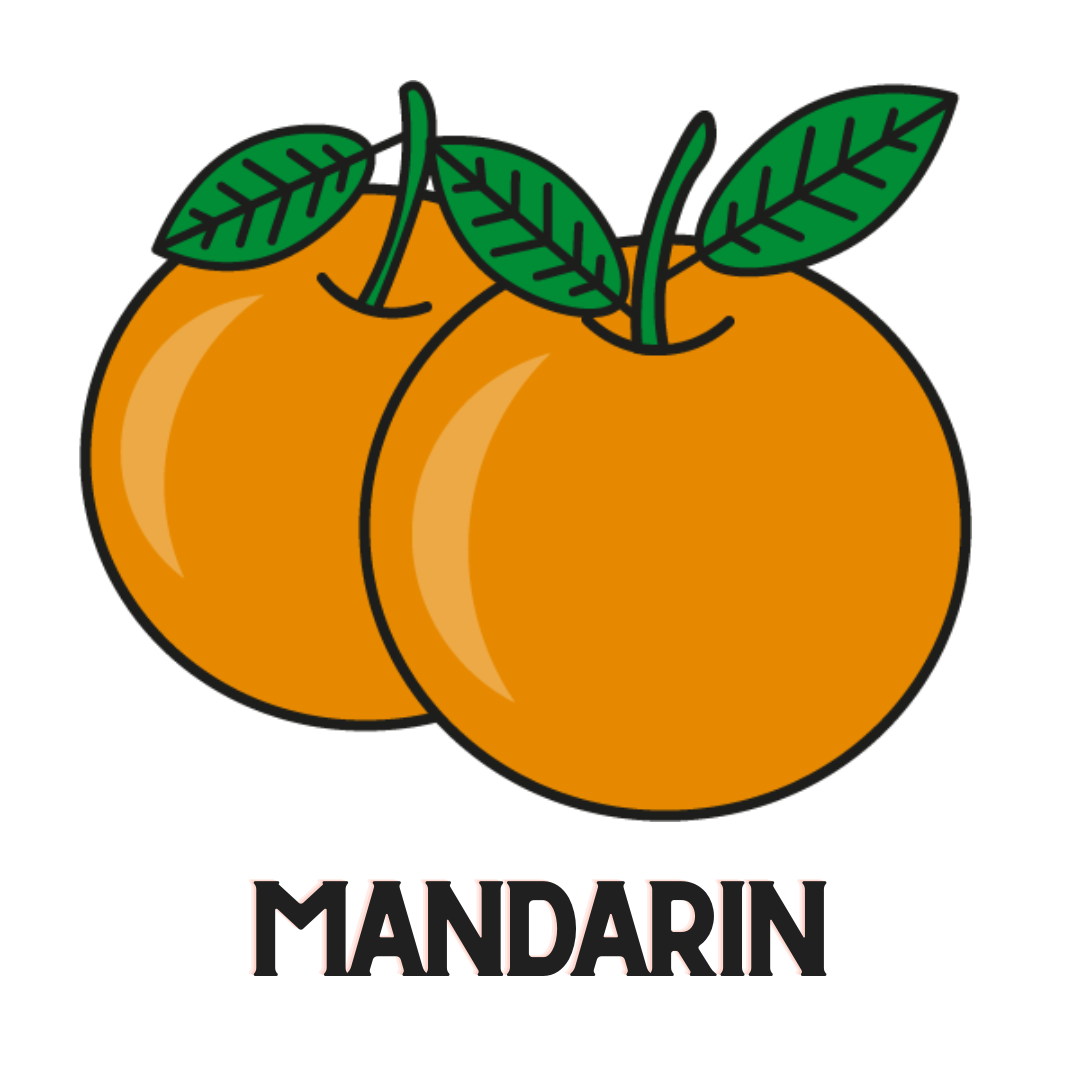Jul 25th 2022 - Monica Cunanan
Different Types of Oranges — Cool Facts about them
Oranges are a delicious and healthy fruit, but most people don't realize that there are hundreds of different types of oranges. They're packed with vitamins C and antioxidants, so they're a quick, energy-packed snack. They're easy to peel and eat, and they travel well. They're just as delicious when juicing them, or chopping them up and adding them to a salad. Oranges in their various forms–juice, pulp, and rinses–are sought-after fruits worldwide. Orange juice as we know it here in North America usually comes from navel oranges (or Valencia oranges). However, there are so many different kinds of oranges! Read on to find out about these different types.
How many Types of Oranges are there?
There are more than 400 different kinds of oranges. In this article, we have listed the common varieties of orange types. There are two main types of oranges: the sweet orange (C. sinensis) and the bitter orange (C. aurantium).
Most Common Types of Oranges

Navel Orange

There are many varieties of oranges available. They are prized for containing high levels of vitamin C, low levels of acid, and delicious taste. They’re called “navel oranges” because they look like human navel. You’ll discover a tiny “mini-orange” at the bottom when you peel the orange skin. One of the reasons why navel oranges are so popular is because they're seedless. They're also easy to peel and they're loaded with sweet juices.
Blood Orange

The blood orange stands apart from other types of oranges because of its bright red flesh. Navel oranges are slightly larger than blood oranges but smaller than tangerines. Oranges have a unique flavor that has a mixture of orange and raspberry flavors. They're relatively easy to peel, and they're very juicy. They’re perfect for making salad dressings, sauces, and marinades. They’re great for fruit juice.
Tangerine

Tangerines are smaller than the typical orange, but they're also sweeter than the typical. Their thin and soft skin is typical for Navel Orange, making it easier to peel off. This makes them a popular snack. They're known for their deep orange color and flesh and are very rich in Vitamin C.
Acid-less Orange

Oranges with no added acids have a lower acid content than oranges with added acids. They're also known as "sweet" oranges, but they don't really taste sweet at all. Oranges don't spoil because they contain very little acid. They're usually eaten, not juiced.
Mandarin

Mandarin oranges are smaller and rounder than your regular orange. They also have softer skin, a sweeter flavor, and less sourness. They’re usually eaten as snacks because they're easy to peel and practically free from seeds, but they're also a popular ingredient for dessert recipes.
Seville Orange

Sour oranges are also known as Seville oranges. They're usually eaten raw as snacks but are often used for cooking. Sour oranges are often used to make marmalade or salad dressings or sauces.
Bergamot Orange

Bergamont oranges are small, round fruits with a yellow or green color. They're the size of an orange, but they're not limes. They don't usually taste good, but they're not usually eaten. Instead, these oranges grow primarily for their peels, which are used in perfumes and to flavor Earl Grey tea.
Clementine

Clementines are actually hybrids between a willow leaf mandarin orange and a sweet orange. The peel has a bright orange color with a smooth, glossy appearance. They’re similar to tangerines, but they’re easier to peel and are a big hit with kids because they're cute and easy to eat! They're typically juicy and sweet but have a low acid content.
Trifoliata Orange

Native to northern China and Korea, trifoliate oranges. They're particularly interesting because they're actually quite hairy. They're small oranges and are used mostly for making marmalade.
Cara Cara Navel Orange

The Cara Caras navel orange is like a combination of an orange and a blood orange. It has a deep reddish purple flesh that’s very sweet and low in acidity levels. It has a complex taste with hints of cherry and berry.
Types of Sweet Oranges
Sweet orange is divided into four classes, each with distinct characteristics. Among the sweet common orange varieties is one unique citrus variety called the mandarin. Satsuma, Tangerine, Clementine are types of mandarin
Common orange
Orange is one of the most popular fruits in the world. There are several different varieties of common oranges, including the Valencia Orange, Hart's Valencia, and the Hamlins, but there are dozens more.
Blood or pigmented orange

There are two types of blood oranges: the light blood orange (or ruby) and the deep blood orange (or carmine). Blood oranges are a naturally occurring mutation of C. sinensis. They contain high amounts of anthocyanins, which gives them their deep red color. There are several types of blood oranges including: Maltese, Morroccan, Sicilian, Sanguinello, and Tarocco (Tarocco means "tarocco" in Italian).
Navel orange
The navel orange has been known for centuries as the most common orange found at grocery stores. There are several types of Navel Oranges, including the Cara Cara, Bahia, Dreams, Late Navels, and Washington or California.
Acid-less orange
Oranges without acid have very little acid, so they don't taste good. Early season fruit, known as acid-less oranges, is also called sweet oranges. They contain very little juice, which means they're not suitable for juicing. They are not usually grown in large quantities.
Types of Bitter Orange
- Seville orange C. aurantium, which is often used as rootstock for citrus trees, is also used in the production of marmalade.

- Bergamot orange (C. bergamot is grown primarily in Italy and used in perfumes and flavored Earl Grey tea.
- Trifoliate orange (Poncirus trifoliata), is sometimes included here and is also used as rootstock for sweet orange trees. Trifoliate orange trees bear downy fruit and this type of orange is used to make marmalades as well. They are native to northern China and Korea.
- Naruto and Sanbo of Japan
- Kitchli of India
- Nanshodaidai of Taiwan
7 Interesting Facts About Oranges

- During the winter months, most fruits don't bear a lot of good fruit, but oranges are an exception. Winter is the time when oranges are at their best, bursting with flavor, antioxidants, and vitamin C.
- Oranges are currently one of the largest citrus fruits in the world, and they originated from China.
- Brazil is one of the leading orange producers in the world, producing approximately 30 percent of the world's output of oranges.
- The United States accounts for about 10% of global production.
- Approximately 70% of the oranges produced in the United States are produced in Florida. California, Texas, Florida, and Arizona are also major producers.
- Though orange trees need tropical climates, they're actually classified as evergreen plants.
- There are 400 different types of oranges that go far beyond the common navel orange.
Need Dinnerware/ Equipment for your Food Business?
Here at CulinaryDepot, we carry all kinds of commercial kitchen equipment and dinnerware for your business. Learn more about the tools for professional and home bartenders. Get in touch, and we'll help you get all the restaurant equipment you need to run your business!

